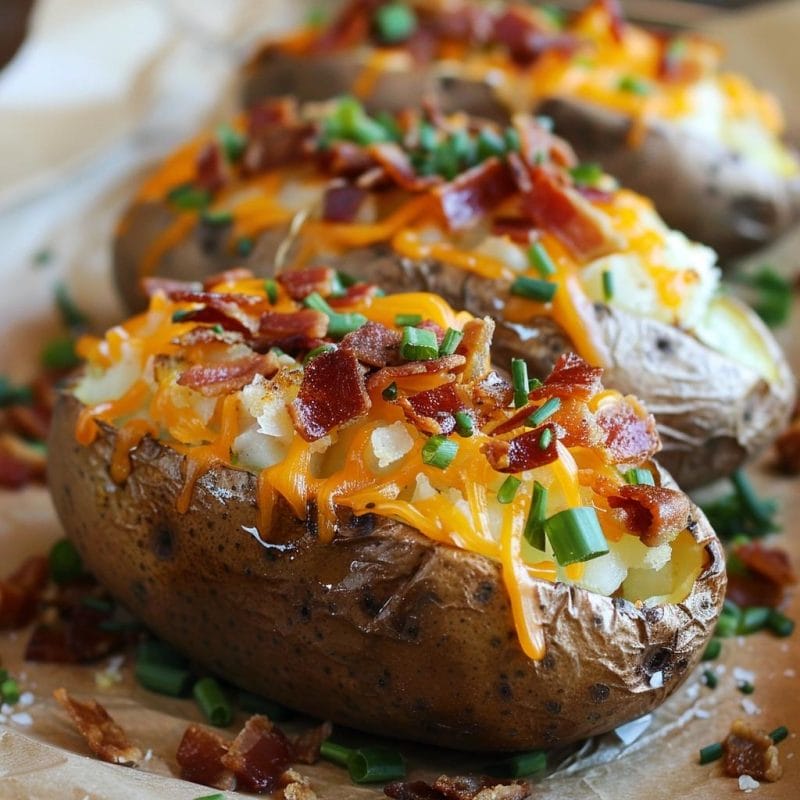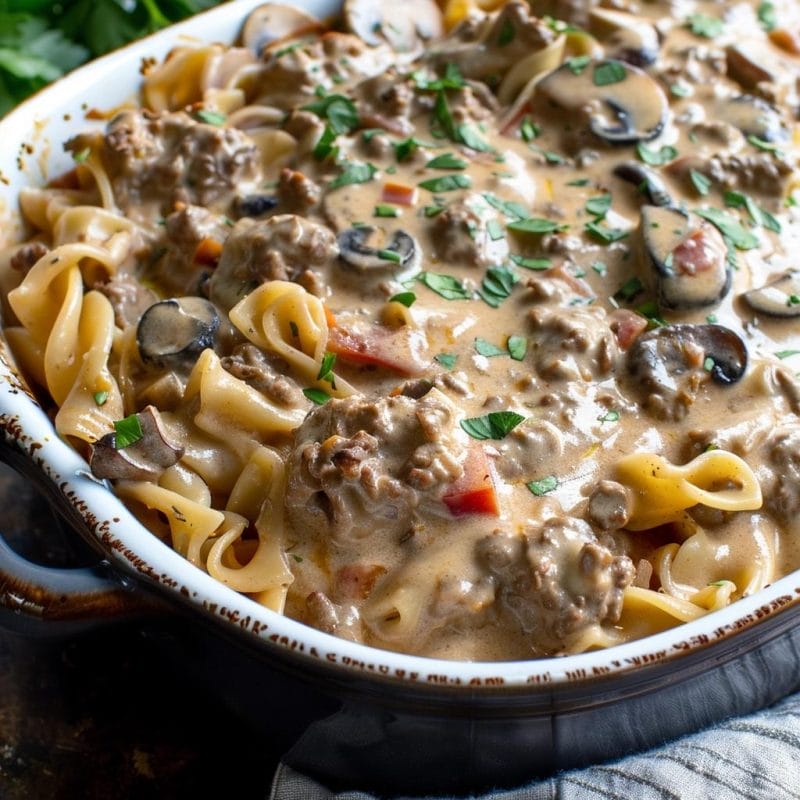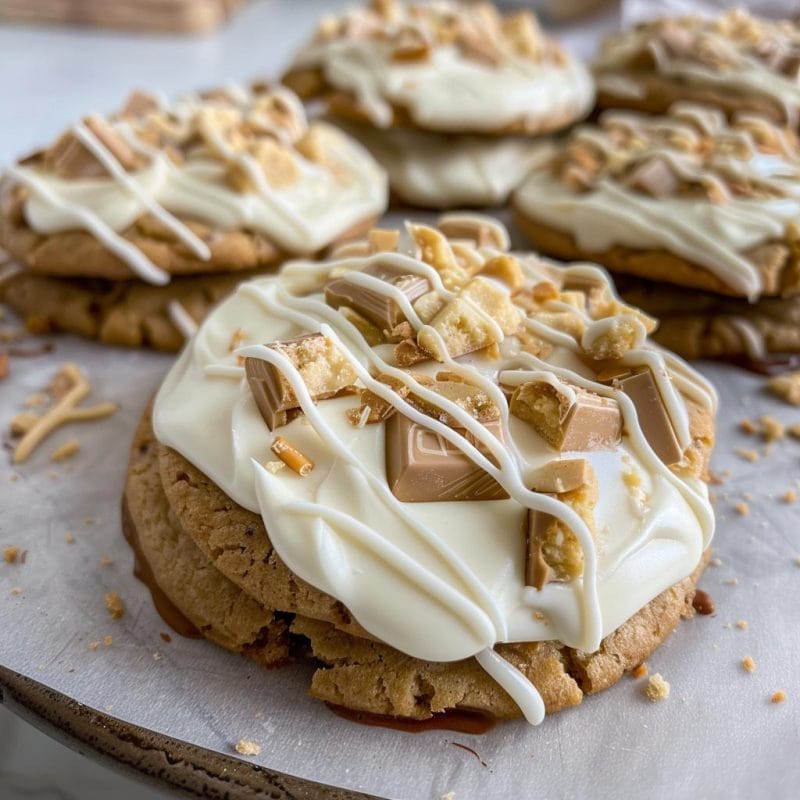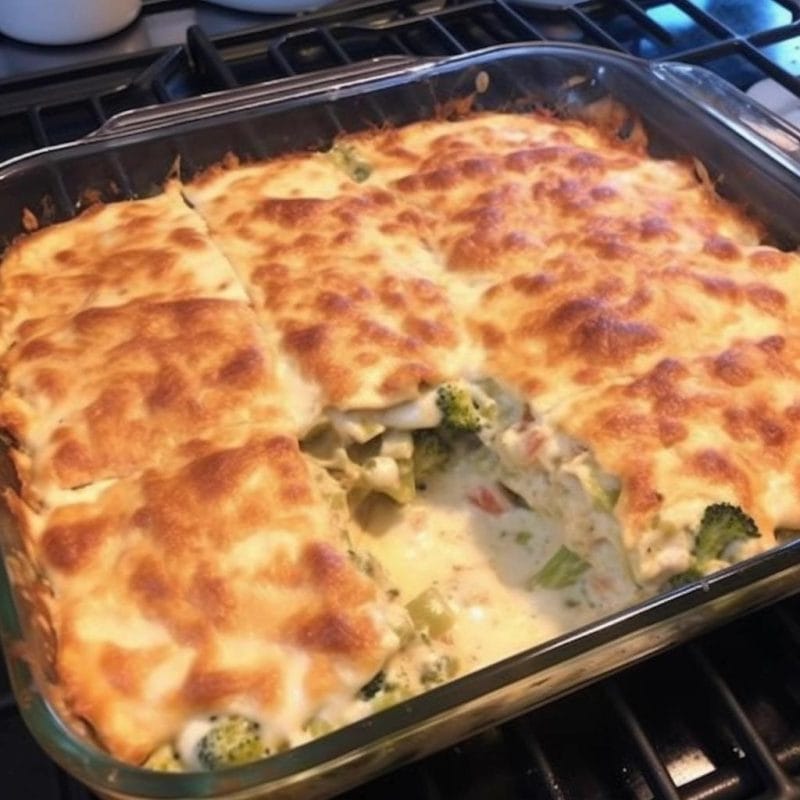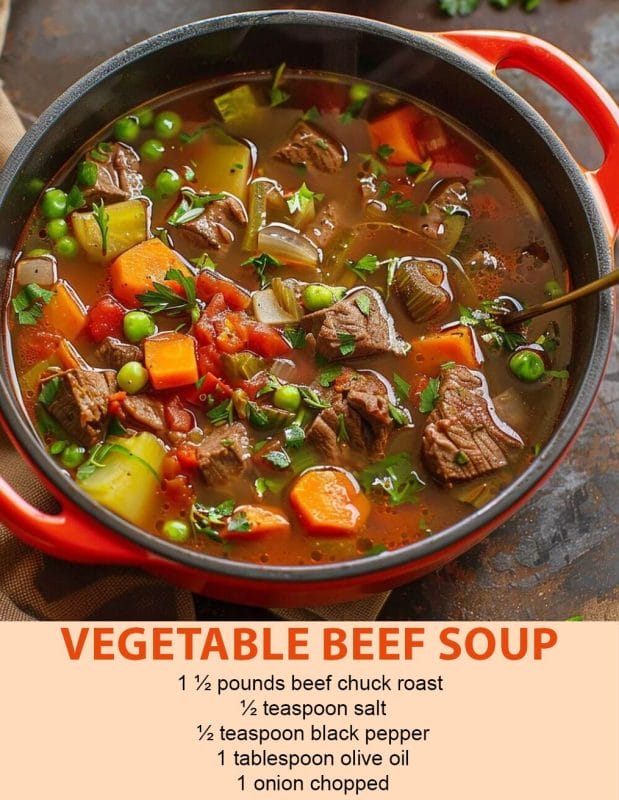Would you like to save this?
There are few dishes that epitomize comfort and simplicity quite like the classic baked potato. It’s a meal that’s been a staple on dinner tables for generations, loved for its versatility, ease of preparation, and sheer deliciousness. Imagine a fluffy, steaming interior encased in a crisp, golden skin—a culinary contrast that can turn a humble potato into a delectable treat. For me, baked potatoes evoke warm memories of cozy family dinners and simple pleasures. They remind me of evenings spent around the table, where the potato was a perfect canvas for countless toppings, each bite offering a unique combination of flavors and textures.
The art of baking the perfect potato is not just about cooking; it’s about creating an experience. The process might seem straightforward, but achieving that ideal balance of a crispy exterior and a tender, fluffy interior requires attention to detail and a few key steps. This guide will walk you through each part of making the perfect baked potato, offering tips and tricks to elevate your results. Whether you’re preparing a side dish, looking for a hearty lunch, or creating a base for a fully loaded meal, mastering the baked potato can be your ticket to culinary satisfaction.
Ingredients
4 large russet potatoes, scrubbed and dried
2 tablespoons olive oil
Sea salt
Optional toppings: butter, sour cream, shredded cheese, chives, bacon, chili, broccoli
Instructions
1. Preheat the Oven
Begin by preheating your oven to 425°F (220°C). This high temperature is crucial for achieving that desired crispy skin while ensuring the potato flesh becomes tender and fluffy. Position the oven rack in the middle of the oven to allow for even cooking. This prevents the potatoes from being too close to the heating elements, which can lead to uneven baking.
2. Prepare the Potatoes
Scrub the russet potatoes under cold running water to remove any dirt or debris. Russets are ideal for baking due to their high starch content and thick skin, which crisps up beautifully in the oven. After scrubbing, pat the potatoes dry with a clean kitchen towel. Dry potatoes are essential for achieving a crispy skin because excess moisture can steam them instead of baking them.
Pierce each potato several times with a fork. This step is crucial as it allows steam to escape during the baking process. Without these vents, steam could build up inside the potatoes, leading to potential bursts or uneven cooking.
3. Season the Potatoes
Rub each potato with olive oil. The oil helps the skin become crisp and golden while also enhancing the flavor. For an extra layer of flavor, you can use other oils such as canola or avocado oil, though olive oil is a classic choice.
Sprinkle sea salt evenly over the potatoes. The salt not only adds flavor but also contributes to the crispy texture of the skin. Sea salt is preferred for its coarse texture, which adds a delightful crunch.
4. Bake the Potatoes
Place the prepared potatoes directly on the middle oven rack. This allows the heat to circulate evenly around the potatoes, promoting a consistent texture throughout. If you’re concerned about drippings, place a baking sheet or piece of foil on the lower rack to catch any residue. This will keep your oven clean and prevent smoking.
Bake the potatoes for 45 to 60 minutes. The exact time will depend on the size of the potatoes and your oven’s performance. Start checking for doneness after 45 minutes by inserting a fork or skewer into the center of a potato. It should slide in easily with little resistance. If the potatoes are not tender, continue baking, checking every 5 minutes.
5. Cool and Prepare for Serving
Once baked, carefully remove the potatoes from the oven. Let them rest for about 5 minutes. This cooling period allows the steam to redistribute, making the potatoes easier to handle and the insides more fluffy.
Cut a seam across the top of each potato. Gently squeeze the ends towards the center to open the potato and fluff the insides with a fork. This helps to separate the flesh and creates a perfect pocket for your toppings.
6. Add Your Favorite Toppings
Serve the baked potatoes hot with a variety of toppings. Classic options include a pat of butter, a dollop of sour cream, a sprinkle of shredded cheese, fresh chives, or crispy bacon bits. For a heartier option, top with chili or steamed broccoli. The beauty of baked potatoes lies in their versatility—each topping adds a new layer of flavor and transforms the dish to suit different tastes and preferences.
Variations and Substitutions
Cheese Choices
: While cheddar cheese is a popular choice, you can use other types of cheese such as Monterey Jack, Parmesan, or a blend of your favorites.
Vegetarian Options: For a vegetarian twist, load your baked potato with toppings like sautéed mushrooms, caramelized onions, or roasted bell peppers.
Healthier Toppings: Opt for Greek yogurt instead of sour cream for a lighter alternative. You can also use reduced-fat cheese or add extra vegetables for a nutritious boost.
Seasoned Skins: Experiment with different seasoning blends for the potato skins. Try adding garlic powder, paprika, or dried herbs to the olive oil before rubbing it on the potatoes.
Conclusion
The Perfect Baked Potato is more than just a simple side dish; it’s a versatile and satisfying canvas that can be customized to suit any taste or occasion. Its crisp exterior and fluffy interior create a delightful contrast that makes every bite a pleasure. Whether you’re enjoying it as a base for a loaded meal or as a simple accompaniment to your favorite dishes, this recipe delivers both comfort and culinary delight. Mastering the art of the baked potato allows you to explore endless variations and topping combinations, making it a timeless favorite that continues to bring joy and satisfaction to any table. Enjoy the process of making and eating this classic dish, and relish in the comfort it brings with every perfectly baked bite.

